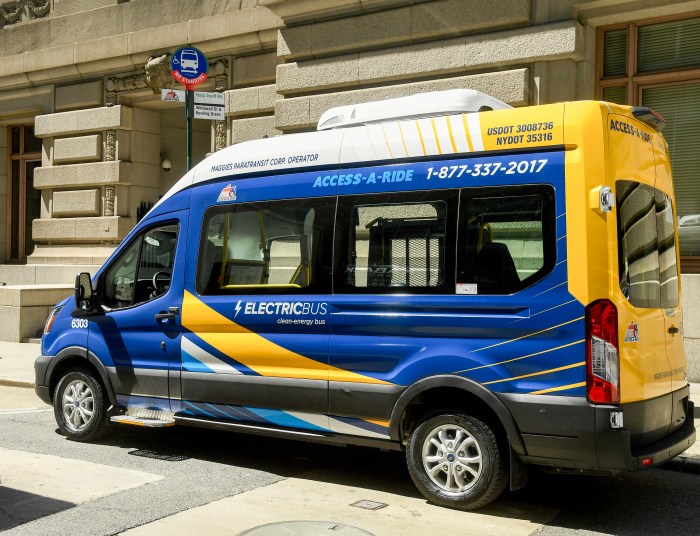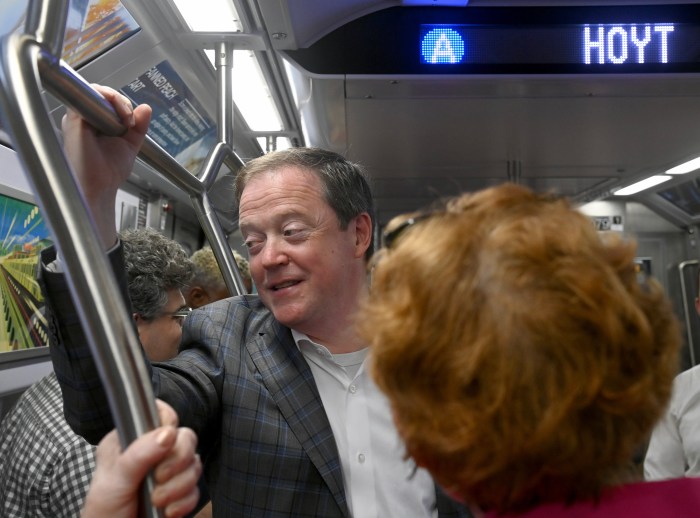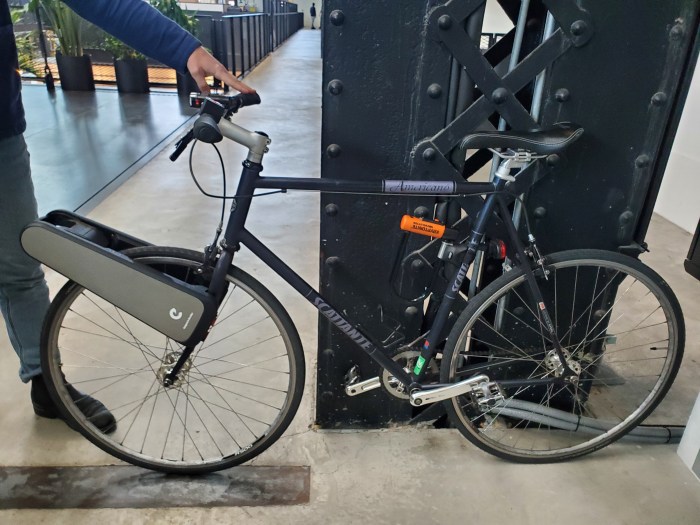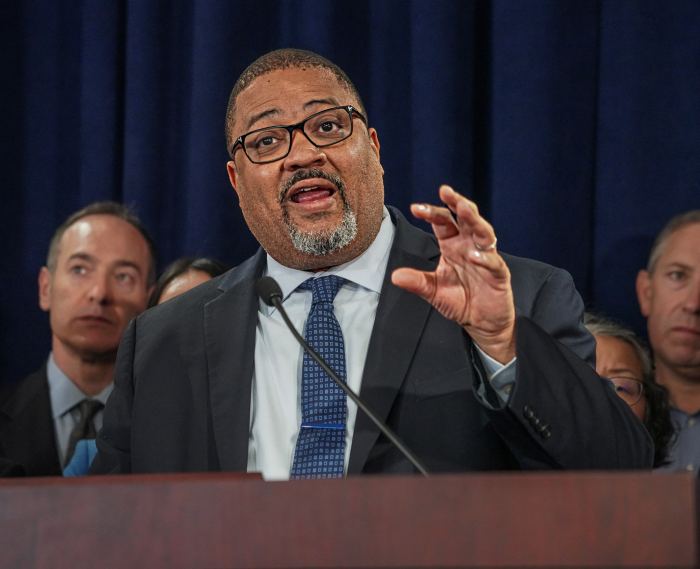
Mayor Bill de Blasio has the ferries, now he just needs his captains.
With the first boats in town to serve NYC Ferry’s May 1 launch, its operator, Hornblower, is busy priming new captains for their routes through New York Harbor.
“A lot of people come to me and say, ‘Well, I have my driver’s license, can I be a captain?’ It’s a little more complicated than that,” said Richard Paine Jr., regional director at Hornblower, at SUNY Maritime recently.
Before captains earn their stripes in the harbor, they must conquer a digital simulation at the school, located on the tip of Throggs Neck in the Bronx.
Inside a small room at Maritime that’s shaped like a ferry wheelhouse, wraparound screens offer a 360-degree view of the harbor. Captains in training pilot virtual ferries past familiar landmarks like the Statue of Liberty and other boat traffic, from Staten Island Ferry boats to jet skis.
Hornblower staff members watch, grading prospective hires on their decision making, navigational abilities and understanding of Coast Guard regulations, known as the “rules of the road.”
“Are [you] going to be able to smell the salt of the water, feel the wind? No,” said Paine, “but there’s a good educational piece here because you go in there and you know that, the mistakes you make, there’s no consequences.”
James Rogin, Maritime’s simulator director, gets to set the weather and can drop, route or erase harbor traffic as he chooses to replicate real-life congestion. The simulator, which is programed with software that mimics the handling of NYC Ferry boats, is authentic enough to evoke sea sickness with stormy seas.
“If we’re here to make the mariner a better mariner, you have to stay consistent,” said Rogin. “You can’t be putting things they wouldn’t normally see out there. So I’m not going to put a tanker that’s on fire … but container or cruise ships are something I’ll throw in there.”
Four NYC Ferry captains have been hired thus far. That number will grow to roughly 50 or so as NYC Ferry service expands to all 20 vessels and four routes in 2018. It was not immediately clear how many people have applied for the positions.
“I wouldn’t say it’s a piece of cake because everything gets thrown at you,” said Sid Khan, 40, an Army veteran and the latest NYC Ferry captain to be hired. “Being in a difficult situation, you want to be in a simulator. That way when it really does happen, you’ll feel a little more prepared.”
NYC Ferry will first launch on May 1 with its Rockaway route, which will run from a new dock on Beach 108th Street to the Brooklyn Army Terminal, with a terminus at Pier 11 at Wall Street.
The South Brooklyn route, with stops at Bay Ridge, Sunset Park, Red Hook and Brooklyn Bridge Park, will begin service on June 1. The third route launching this summer, the Astoria route, will begin in August. An exact date is still being determined.
One-way trips will cost $2.75, but fares aren’t integrated with the MTA, so riders won’t be able to get free transfers to or from the subway or city buses. The city-subsidized NYC Ferry will look to succeed where other similar ferry services, faced with high costs due to low riderships, have failed.
“We want to make things a little calmer, a little less stressful. And a ride on a ferry makes things a little nicer,” de Blasio said after christening the first ferry last week. “And a lot of times, it gets you where you’re trying to go faster.”
NYC Ferry facts:
–Service launch: May 1
–Fares: $2.75
–Routes: Expansion to six routes in 2018
–Schedule: 6:30 a.m. to 10:30 p.m., generally
–Boat capacity: 150 passengers

















